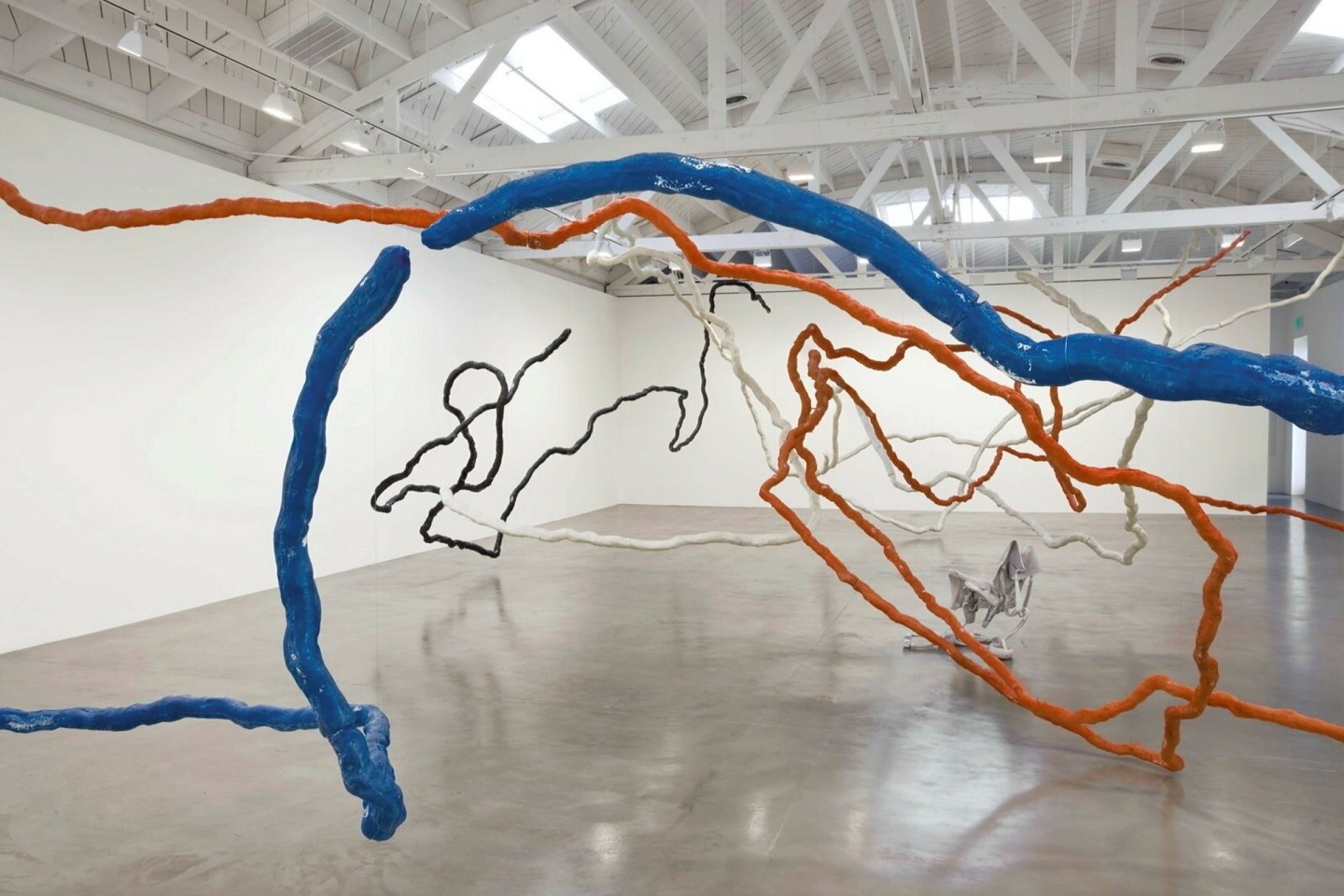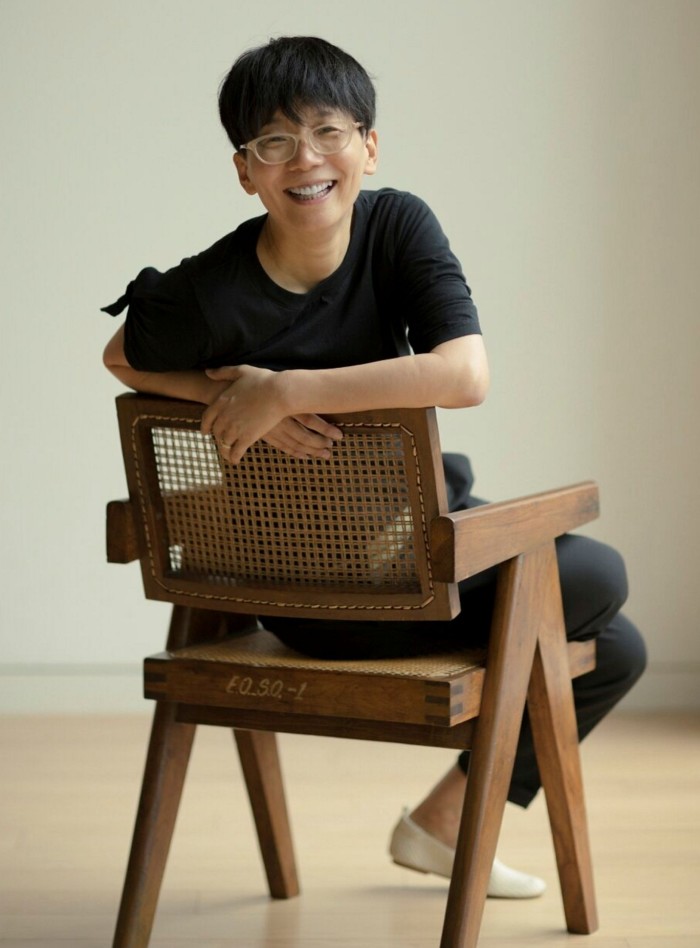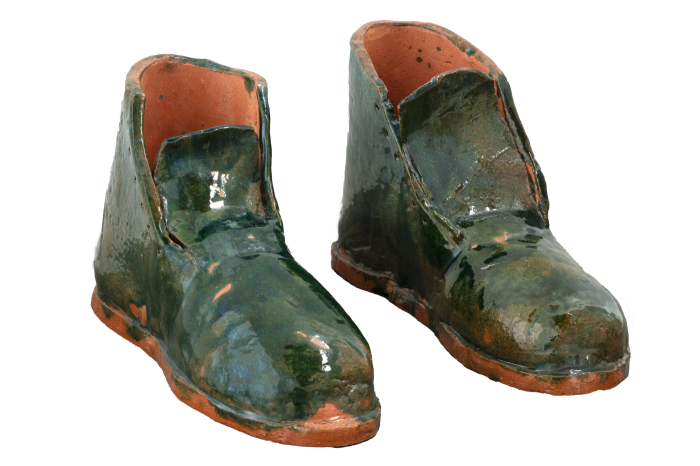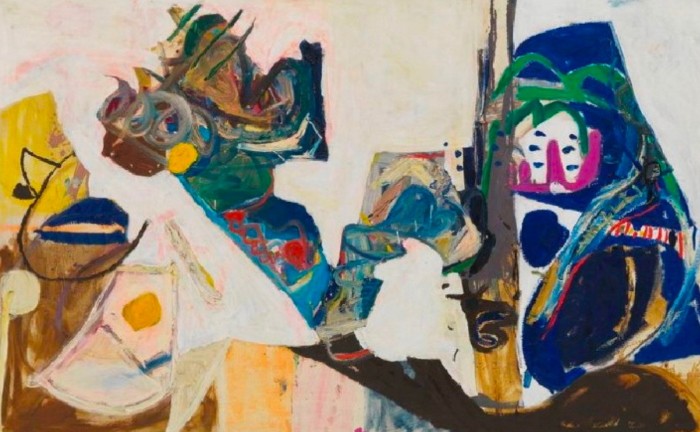Collector Li Lin: ‘Art changes the way you think’

Roula Khalaf, Editor of the FT, selects her favourite stories in this weekly newsletter.
Li Lin is sitting in her Renzo Piano-designed offices in Hangzhou, China, when we talk over Zoom. Dressed in a plain dark hooded top, she hardly looks like a successful fashion entrepreneur: her short hair is bobbed into a neat cap and she is relaxed and full of fun and laughter.
Yet the company she co-founded in 1994, the JNBY Design group, is one of China’s well-known fashion brands, is quoted on the Hong Kong stock exchange and has a market cap (at time of writing) of HK$4.9bn (US$625mn). Today it has more than 2,000 stores worldwide, with multiple brands such as JNBYHOME, Less and Croquis.
“I was always excited by art,” Li Lin says. “As a schoolgirl we had drawing classes but they disappointed me, they were too traditional, they didn’t allow me to express my inner feelings. While we didn’t have an art museum in Hangzhou, there was a foreign language bookstore which was really good. You could see the covers through the windows — and seeing them was the seeds of my interest in art.”

Then at university she met two “local, great” artists: Geng Jianyi and Zhang Peili, who fanned her growing love of art. She was already collecting but in a totally different field — rocks of all kinds, both geological and archaeological specimens. “I love them!” she exclaims, and apparently the joke at work is that Li has more rocks than art and there’s a danger the offices will collapse under their weight.
While she initially bought Chinese art from local artists — “for my home, and to support them” — Li’s tastes changed and broadened once she started visiting Europe in the 1990s. “In Paris I found small galleries on the Left Bank and started by buying small works on paper — for example, by Kees van Dongen and Henri Matisse.”
She co-founded her company with her boyfriend (later husband) Wu Jian, thanks to a “small amount” of financial help from her parents and a former boss. “I had gone to Guangzhou on [her former boss’s] behalf and there I saw clothes and imported fabrics, which gave me ideas. At the time China didn’t have brands in the way the west did — it was very difficult to find good fashion. My mother used to make all my clothes,” Li says.
Once she started travelling, she visited all the institutions she could — she cites the Centre Pompidou and La Maison Rouge, both in Paris, the latter now closed, and the Prado in Madrid as important influences on her collecting: “These great art museums are so inspiring, they change your mindset, both for the art and the way it is displayed,” she says.

And so, from a single womenswear store in Hangzhou, the JNBY brand grew fast, adding menswear, childrenswear and lifestyle to the mix. Li was lucky in her timing: in the 1990s China was easing commercial restrictions and demand was high for products such as hers, with little competition. In 2005 its first foreign store opened in Moscow and a year later in Japan. In 2010 it opened in the US.
In 2016 JNBY launched on the Hong Kong stock exchange. “We decided to go public because we could and because it was a challenge I and my husband wanted to take,” Li says. “I am not a financial person, but my husband is; I am the more creative and design person in the business.” Has art had an influence on Li’s designs for the company then? “For sure. I am influenced by art in my designs, both by contemporary art and conceptual art. Art changes the way you think and what you are looking at — that is the most important thing art has brought to me.”
There have been bumps in the road, notably when a JNBY childrenswear line was withdrawn after accusations that it bore inappropriate images drawn from an existing artwork. (JNBY says it now includes “more diverse groups of individuals” to review designs.)
I ask Li how big her collection is now. She thinks for a moment, then says; “About 1,000 works, but of course some of them are quite small.” Recent purchases are by Gabriel Orozco, Wang Xingwei, Milton Avery, Paul Anthony Harford and Richard Wright, and Li says she also bought a work by Paula Rego. She has holdings of Urs Fischer, Eva Hesse, Rudolf Stingel, Wolfgang Tillmans and Michaël Borremans among others.
How does she buy — is she spontaneous or more methodical in her approach? “I am very quick in my decision-making — but of course sometimes the works I like are not affordable. And yet it is difficult to say what actually triggers my decision. A gallerist friend once said I choose a work because of its aura or its ‘twist’.” What does “twist” mean? “Something that is interesting, that makes you think, that makes your brain twist a little.”

Li and her husband also invested in new offices for JNBY in Hangzhou and it is from there she is talking to me. Completed in 2020, and dubbed OōEli, which means “at home” in the Hangzhou dialect, the 17-building complex is the first project in China undertaken by Piano and was built in collaboration with the Hangzhou firm Group of Architects. The site includes offices, a hotel, shops and an art museum — By Art Matters directed by the Italian curator Francesco Bonami, which opened in 2021. The complex has a concept store designed by artist Theaster Gates and a courtyard installation by Richard Long. The museum is not meant to show her collection — much of which is in storage — but she does loan works for its exhibitions.
For the moment Li and her husband underwrite the cost of the museum, but Li says they are applying for non-profit status and hope that eventually it will become self-sustaining. For her, establishing it is important: “Hangzhou didn’t have this sort of museum before. And if the exhibitions it puts on introduce more people to contemporary art, if they make people think, that is meaningful and will make the space even more significant in years to come.”

Comments